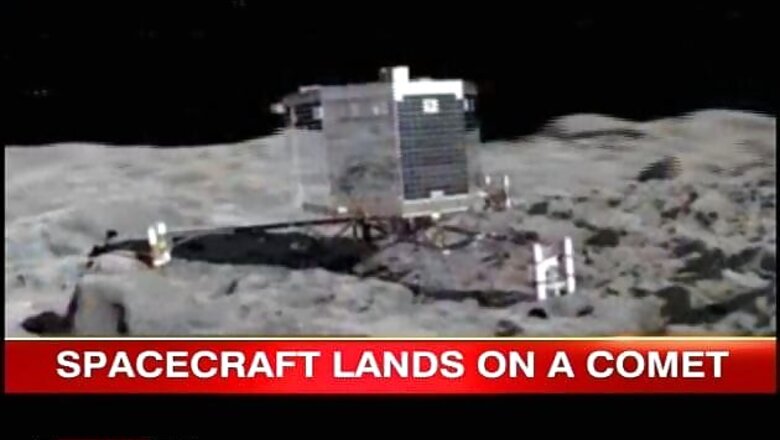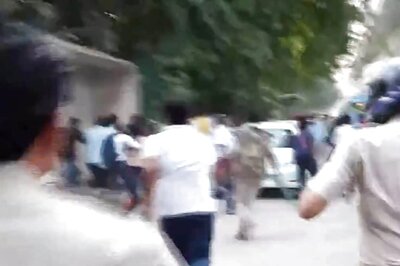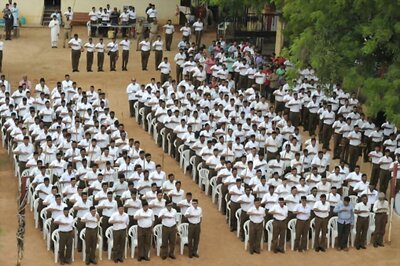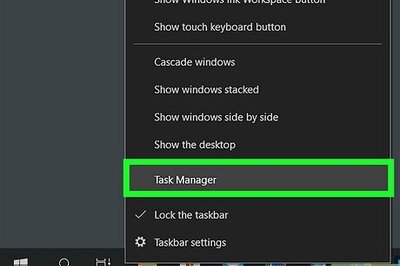
views
London: The European Space Agency's (ESA) ambitious Rosetta comet mission is in trouble again with its Philae lander running out of power on the surface of the comet, media reported on Saturday.
This happened when a last-ditch attempt to nudge the lander to a more sunlit place on the comet apparently came too late to charge its batteries and keep the systems going, The Guardian reported.
Mission controllers for the Rosetta mission had said Friday that they were preparing to "hop" the robotic probe in the hope of settling it in a sunnier spot on the comet's surface.
Philae had apparently been successful in shifting its position to give its shaded solar panels a better chance of catching sunlight.
"My rotation was successful (35 degrees). Looks like a whole new comet from this angle," read a message posted on the lander's official Twitter account. Earlier, the scientists tweeted: "First comet drilling is a fact!"
However, it was then announced that Philae would have to use up its remaining battery power in sending a final burst of data back to earth.
The Philae mission tweeted: "@ESA_Rosetta I'm feeling a bit tired, did you get all my data? I might take a nap... #CometLanding."
The lander's legs are equipped with built-in spring action. Commands were uploaded Friday night to fire them, scientists said, warning though, that there was no guarantee of success.
Another strategy under discussion was to spin up an internal flywheel that could make Philae cartwheel out of its predicament, but that also risked soaking up the last of the lander's battery power.
The Philae lander, which flew to the comet on the Rosetta spacecraft, had failed to tether itself firmly to the comet's surface when its harpoons could not be fired.
Since that awkward landing on the surface of comet 67P/Churyumov-Gerasimenko Wednesday, Philae had been resting on its side, lodged in the shadows of a cliff or a large boulder.
The lander sent back historic first images of the comet's surface Thursday.
These showed that after Philae's bumpy landing, one of its legs was sticking up into space rather than being in contact with the surface, raising doubts about whether there was enough "spring in the lander's step" to achieve the planned "hop".
The landing had left Philae surrounded by rocks with only a sliver of light reaching one of its smaller solar panels and it was receiving just 1.5 hours of sunlight instead of the expected 6-7 hours.
"We are unlucky, in a corner, surrounded by rocks," said Valentina Lommatsch, an expert involved in the mission.
Despite the awkward orientation, the lander's science package still deployed a 1.2-metre arm and a drill.
Philae's primary mission was always designed to last around 60 hours on its initial battery charge. But engineers equipped the spacecraft with solar panels in the hope that sunlight could charge a set of secondary batteries and extend the mission for months.
Philae lander manager, Stephan Ulamec, however estimated that 80 percent of the data that ESA was hoping for had been received and added that if the drilling operation succeeded in delivering samples to onboard instruments, it would rise to 90 percent.
Despite the lander shutting down for now, all might not be lost forever.
The comet is currently out beyond the orbit of Mars, heading for its closest approach to the sun in August 2015. This will bring it as close to the sun as Earth's orbit, where the sunlight will be brighter and may just allow Philae to reboot and power up.
The Philae mission tweeted: "My #lifeonacomet has just begun @ESA_Rosetta. I'll tell you more about my new home, comet #67P soon... zzzzz #CometLanding."
.@ESA_Rosetta I'm feeling a bit tired, did you get all my data? I might take a nap… #CometLanding— Philae Lander (@Philae2014) November 15, 2014
My #lifeonacomet has just begun @ESA_Rosetta. I'll tell you more about my new home, comet #67P soon… zzzzz #CometLanding— Philae Lander (@Philae2014) November 15, 2014


















Comments
0 comment